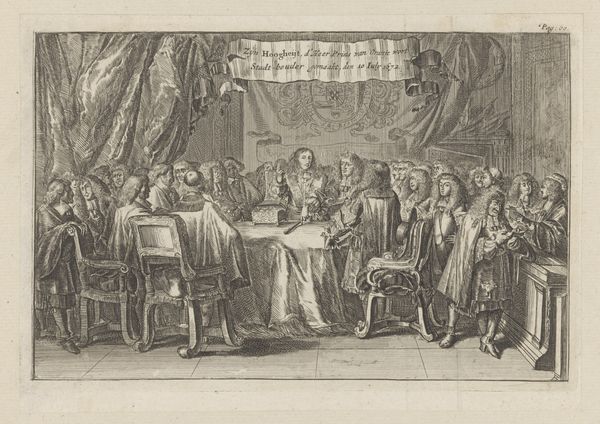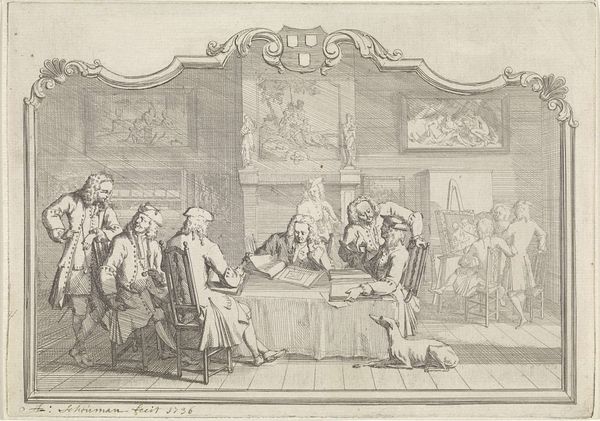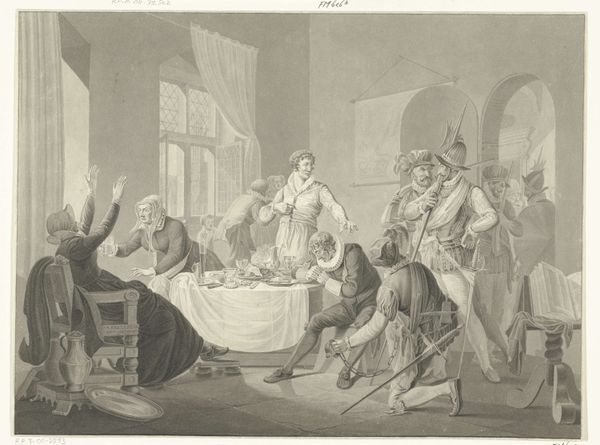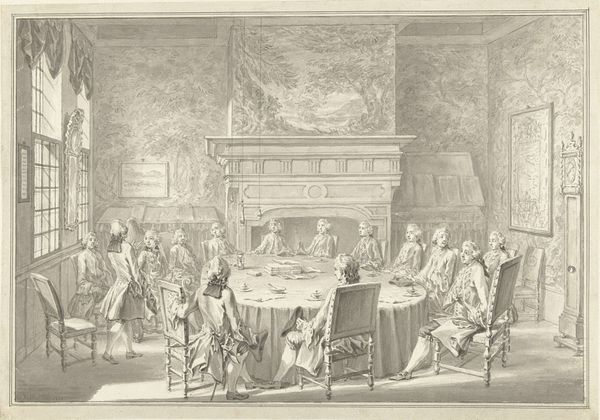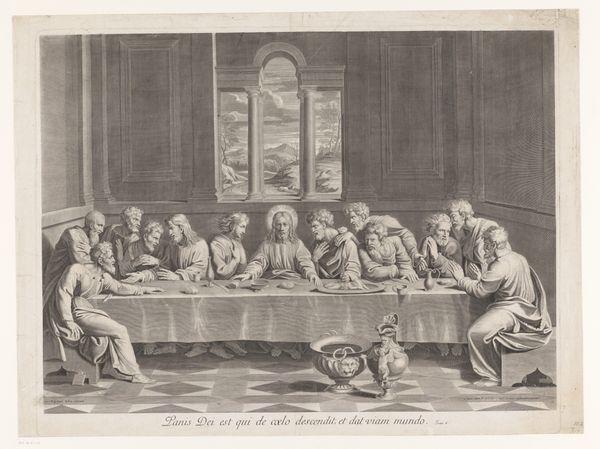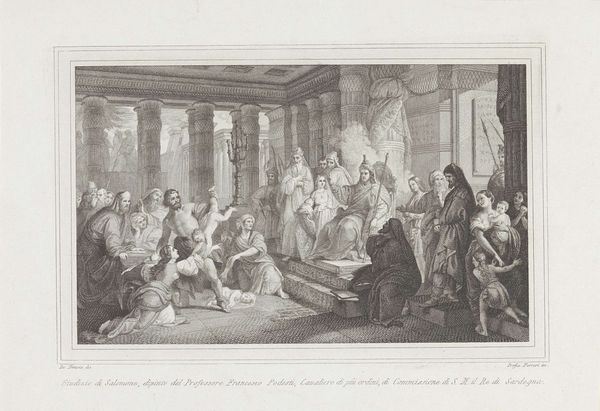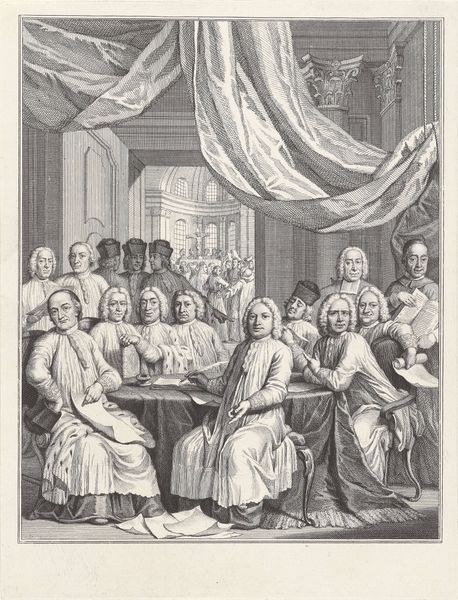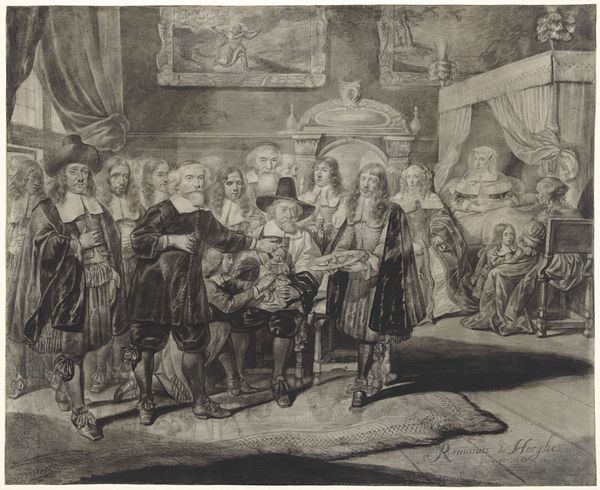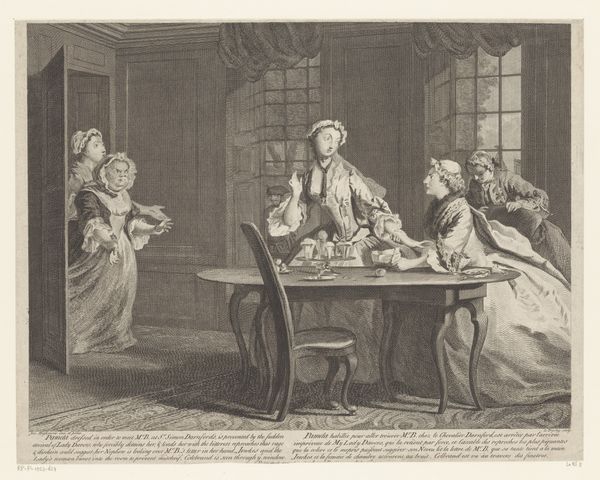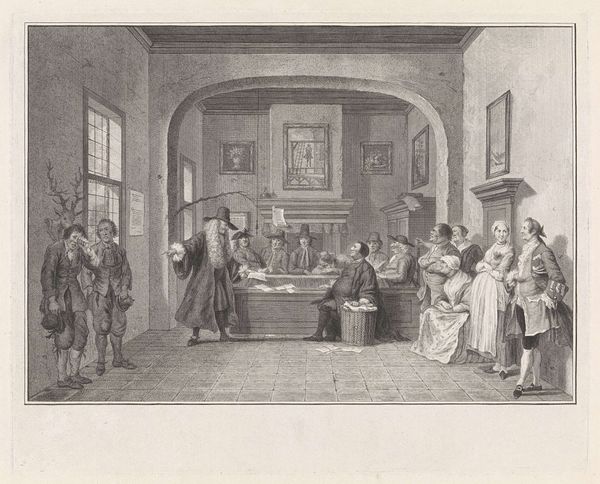
drawing, pencil
#
portrait
#
drawing
#
baroque
#
pencil sketch
#
pencil drawing
#
pencil
#
portrait drawing
#
genre-painting
Dimensions: height 174 mm, width 206 mm
Copyright: Rijks Museum: Open Domain
Curator: This pencil drawing, dating roughly from 1693 to 1753, captures a meeting of the Hague Archers. The artist is Philip van Dijk. Editor: It’s predominantly grey and washed out. There are a lot of gentlemen with wigs, aren't there? Like a parliament of powdered hair. Curator: Indeed. This would have been an era of strict societal structures and the guilds held quite a bit of power in governing cities like the Hague. Van Dijk seems to capture a specific event; meetings were very much part of the process of conducting trade and keeping political control in the hands of burghers. Editor: So it's about material power made visible. All these men, undoubtedly wealthy and influential, convened in one room; the result of the work or sport they produced as an organization had ramifications within the larger economy of the city and beyond. Did van Dijk accept a commission? Curator: Probably so. Guilds often commissioned artists to portray them. These pieces were about celebrating the group and establishing the importance of the association in civic life. The display of power and the reinforcement of its position are significant here. Look how they have all been individualized even if they wear more or less the same sort of clothing. Editor: I notice the way they are drawn, almost obsessively with very light and controlled pressure on the pencil which means they seem unified while having a variety in facial expressions; I see something almost machine-like about the wigs themselves; that feels connected to some system of early mass production, as those things became more refined in this period, Curator: It speaks to an evolving society trying to make visible its organizational components as well as the fruits of collaboration, in a Baroque style. Editor: It does that while raising important questions about labor—it's literally work in the guise of meetings—and representation. Interesting. I came here to see oil paintings. Curator: Indeed. So often these works provide intimate glimpses into the mechanics of bygone governance. Food for thought, definitely!
Comments
No comments
Be the first to comment and join the conversation on the ultimate creative platform.
